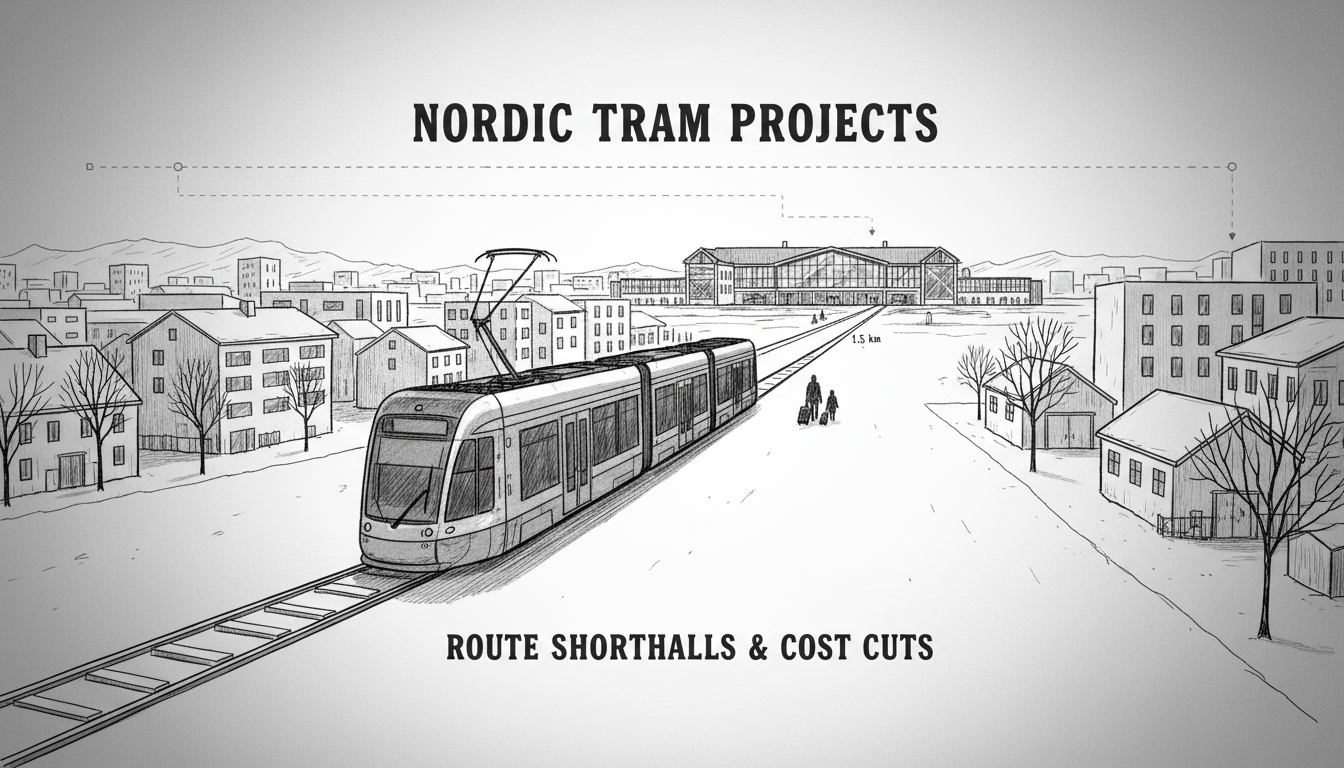Public transport planners keep rediscovering two hard truths. Building rail infrastructure costs substantial money. Fitting new routes into existing cities presents major challenges. These realities now impact tram projects across Nordic urban centers.
Vantaa's planned tram line will stop 1.5 kilometers from Helsinki Airport's terminal. Officials presented this shortened route to city leaders last week. The original plan connected directly to the airport terminal. Budget constraints forced this significant change. Vantaa's city council will make the final decision about construction and costs in mid-November.
This pattern repeats across the Helsinki metropolitan area. The Laajasalo tram line faced reductions at both ends. Initial plans extended the route past a shopping center to Reposalmentie. That location included plans for a combined tram depot and residential building. Local opposition emerged against the depot location. Construction costs for the hybrid building proved extremely high. The new line will now begin passenger service near Saari shopping center in 2027.
Hakaniemi presents another compromise. The Laajasalo line should continue toward central Helsinki. Temporary terminal stops at Hakaniemenranta instead. Complex street renovations in Kaisaniemi and Kaivokatu block the planned central route. Decisions about the line extension remain pending.
The Raide-Joker line reveals similar challenges. This eastern Helsinki route should reach Itäkeskus metro station. Instead, the temporary terminal hides 100 meters from Marjaniementie roundabout. Pre-pandemic plans envisioned an ambitious Joker district above the bus terminal. Trams would glide into this development with perfect metro connections. Property developers and funding shortages canceled these plans.
Why do rail projects consistently get shortened? Building tram lines in developed urban areas proves genuinely difficult. It demands substantial financial investment. Coordinating different needs becomes much harder than in open fields. Yet those open fields rarely contain the passenger numbers justifying such infrastructure investments.
Helsinki's central station demonstrates this historical legacy. Commuter train platforms sit in side wings approximately 160 meters from long-distance tracks. Historical reasons created this separation. Some passengers feel they arrive somewhere near Kaisaniemi rather than the central station. Decision makers prioritize long-distance travel despite higher commuter volumes.
These infrastructure compromises affect daily commutes and urban development. Shortened routes mean longer walking distances and transfer times. They impact property values and business opportunities along planned corridors. Municipal budgets strain under construction costs while public expectations remain high. The tension between ideal planning and financial reality defines Nordic urban transport development.
What happens next for these projects? Vantaa's council decision in November will set important precedents. Other municipalities watch closely as they plan their own transport investments. The fundamental challenge remains balancing public service ideals with economic constraints. Nordic cities continue seeking that balance while building sustainable transportation networks.
